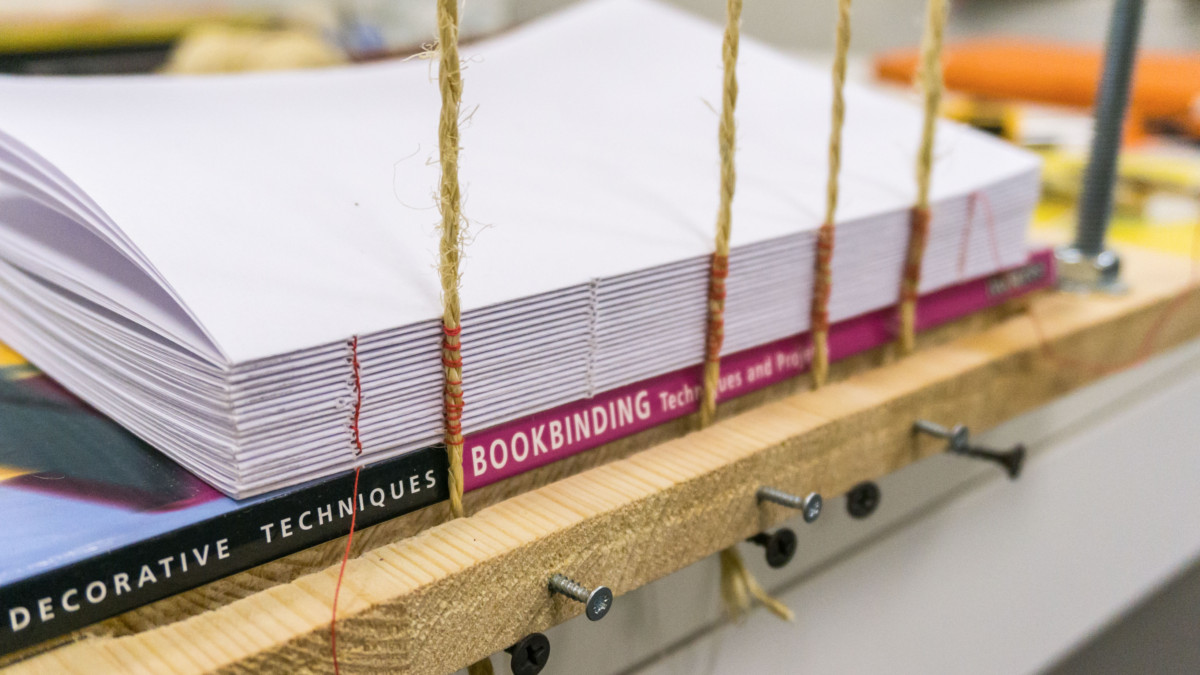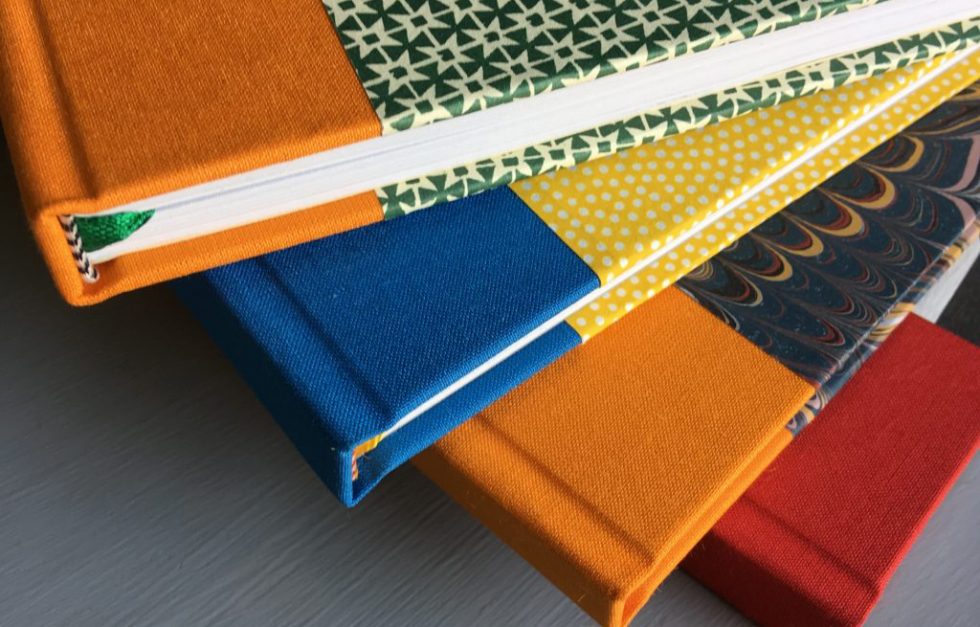Bookbinding is the process of physically assembling a book of codex format from an ordered stack of paper sheets that are folded together into sections or sometimes left as a stack of individual sheets. The stack is then bound together along one edge by either sewing with thread through the folds or by a layer of flexible adhesive. Alternative methods of binding that are cheaper but less permanent include loose-leaf rings, individual screw posts or binding posts, twin loop spine coils, plastic spiral coils, and plastic spine combs.
 For protection, the bound stack is either wrapped in a flexible cover or attached to stiff boards. Finally, an attractive cover is adhered to the boards, including identifying information and decoration. Book artists or specialists in book decoration can also greatly enhance a book's content by creating book-like objects with artistic merit of exceptional quality.
For protection, the bound stack is either wrapped in a flexible cover or attached to stiff boards. Finally, an attractive cover is adhered to the boards, including identifying information and decoration. Book artists or specialists in book decoration can also greatly enhance a book's content by creating book-like objects with artistic merit of exceptional quality. Before the computer age, the bookbinding trade involved two divisions. First, there was Stationery binding (known as vellum binding in the trade) that deals with books intended for handwritten entries such as accounting ledgers, business journals, blank books, and guest log books, along with other general office stationery such as note books, manifold books, day books, diaries, portfolios, etc.
Before the computer age, the bookbinding trade involved two divisions. First, there was Stationery binding (known as vellum binding in the trade) that deals with books intended for handwritten entries such as accounting ledgers, business journals, blank books, and guest log books, along with other general office stationery such as note books, manifold books, day books, diaries, portfolios, etc.  Computers have now replaced the pen and paper based accounting that constituted most of the stationery binding industry. Second was Letterpress binding which deals with making books intended for reading, including library binding, fine binding, edition binding, and publisher's bindings.[1] A third division deals with the repair, restoration, and conservation of old used bindings.
Computers have now replaced the pen and paper based accounting that constituted most of the stationery binding industry. Second was Letterpress binding which deals with making books intended for reading, including library binding, fine binding, edition binding, and publisher's bindings.[1] A third division deals with the repair, restoration, and conservation of old used bindings. Today, modern bookbinding is divided between hand binding by individual craftsmen working in a shop and commercial bindings mass-produced by high-speed machines in a factory. There is a broad grey area between the two divisions. The size and complexity of a bindery shop varies with job types, for example, from one-of-a-kind custom jobs, to repair/restoration work, to library rebinding, to preservation binding, to small edition binding, to extra binding, and finally to large-run publisher's binding. There are cases where the printing and binding jobs are combined in one shop. For the largest numbers of copies, commercial binding is effected by production runs of ten thousand copies or more in a factory.
Today, modern bookbinding is divided between hand binding by individual craftsmen working in a shop and commercial bindings mass-produced by high-speed machines in a factory. There is a broad grey area between the two divisions. The size and complexity of a bindery shop varies with job types, for example, from one-of-a-kind custom jobs, to repair/restoration work, to library rebinding, to preservation binding, to small edition binding, to extra binding, and finally to large-run publisher's binding. There are cases where the printing and binding jobs are combined in one shop. For the largest numbers of copies, commercial binding is effected by production runs of ten thousand copies or more in a factory.
0 comments:
Post a Comment